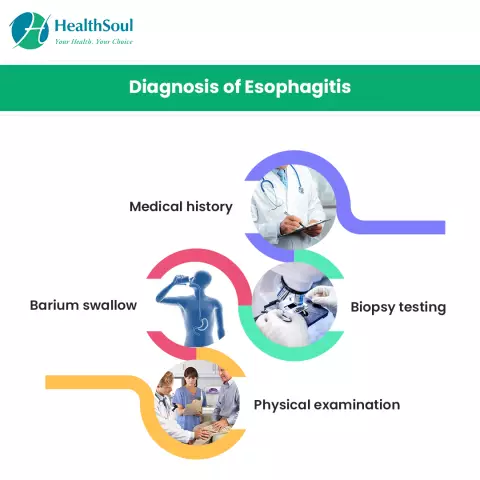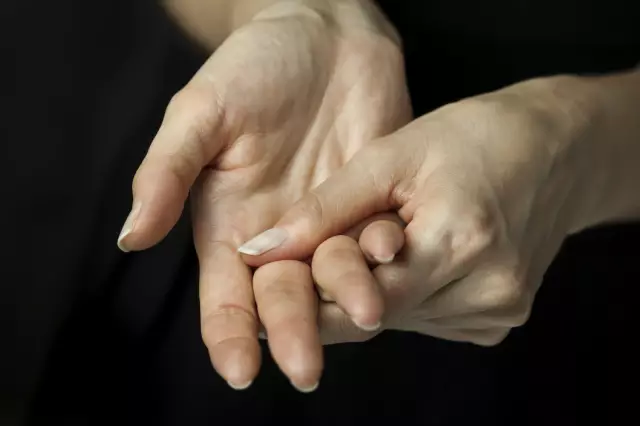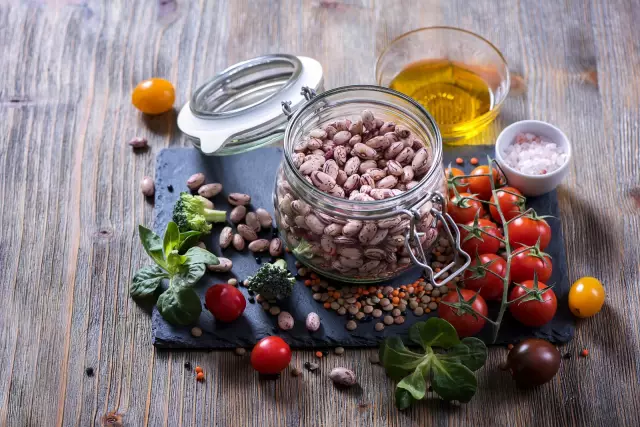- Author Rachel Wainwright [email protected].
- Public 2023-12-15 07:39.
- Last modified 2025-11-02 20:14.
Esophagitis

Esophagitis is an inflammation of the lining of the esophagus.
This disease occurs quite often, but is rarely isolated. As a rule, esophagitis is accompanied by other diseases of the gastrointestinal tract.
Esophagitis is a polietiologic disease and can occur at any age. Men are prone to it several times more than women, which is associated with more frequent alcohol consumption and unhealthy diet.
Esophagitis reasons
Esophagitis can be caused by many factors that affect the lining of the esophagus. The anatomical position of the esophagus is such that both external, exogenous factors and internal, endogenous factors can irritate its mucosa.
Exogenous causes of esophagitis include damage to the mucous membrane as a result of exposure to chemical or thermal factors.
Chemicals are alcohol, spicy food, the action of acid or alkali, iodine, etc. Thermal - burns with hot food or drinks, including a chronic burn caused by the constant use of too hot foods.
Esophagitis caused by endogenous factors is more common. The immediate cause of its development is the weakness of the cardia - the lower esophageal sphincter, which normally does not allow the contents of the stomach to enter the esophagus. If the cardia for one reason or another ceases to cope with its function, a part of the acidic gastric contents is thrown back into the esophagus, this phenomenon is called reflux (translated from Latin - reverse flow). Digestive enzymes and hydrochloric acid in the stomach erode the lining of the esophagus. The resulting inflammation of the esophagus is called reflux esophagitis.
Factors contributing to the development of reflux esophagitis are as follows:
- Hernia of the esophageal opening of the diaphragm;
- Damage to the cardia during surgery on the stomach or esophagus;
- Cholelithiasis;
- Stomach ulcer;
- Systemic scleroderma;
- Tumors of the abdominal cavity;
- Obesity;
- Pregnancy;
- Vomiting;
- Nutrition through a gastronasal tube.
Another cause of esophagitis can be chronic infectious diseases affecting the mucous membranes, including the esophagus, for example, tuberculosis, diphtheria, flu.
Types of esophagitis
By the nature of the course, esophagitis can be acute or chronic.
Depending on the origin, esophagitis is:
- Alimentary (caused by food);
- Allergic;
- Stagnant;
- Professional;
- Infectious.
By morphological features, the following types of esophagitis are distinguished:
- Catarrhal esophagitis. The most common form of esophagitis, with an unfavorable course passes into other forms;
- Edematous esophagitis;
- Erosive esophagitis. In this form, superficial erosions appear on the mucous membrane of the esophagus. Formed by chemical burns, reflux, some infectious diseases;
- Hemorrhagic esophagitis. This form is usually caused by an infection;
- Pseudomembranous esophagitis. It is characterized by the appearance of a fibrinous film, not tightly welded to the esophageal mucosa, caused by an infection;
- Exfoliative esophagitis. Also caused by infection, in which case the fibrinous effusion is tightly welded to the mucous membrane;
- Necrotizing esophagitis. It arises from one of the previous forms due to a decrease in immunity with concomitant severe general pathology;
- Phlegmonous esophagitis. Acute purulent inflammation that occurs when a foreign body enters.
Esophagitis symptoms
Each type of esophagitis has characteristic symptoms, but there are symptoms common to all forms of esophagitis.

The main symptom of esophagitis is a feeling of pain and burning (heartburn) in the epigastric and retrosternal region. Pain may depend on food intake, or it may not, as a rule, unpleasant symptoms worsen during exercise. Depending on the type of esophagitis, the pain can be constant or paroxysmal, aching, sharp, etc. The characteristic symptoms of esophagitis include belching with air mixed with gastric contents. Nausea, vomiting, and increased salivation are also common symptoms of esophagitis.
Reflux esophagitis is manifested by an increase in symptoms in the supine position, in the supine position there is a taste of acidic gastric contents in the mouth, there is a cough that is not associated with diseases of the bronchi and lungs, shortness of breath may appear.
In the acute form, the symptoms of esophagitis are pronounced, a general deterioration of the condition joins them: the body temperature rises, the tone falls, other dyspeptic phenomena join - upset stool, flatulence. Chronic esophagitis is characterized by alternation of exacerbations and remissions. However, even in the period of remission, the symptoms of esophagitis usually do not completely disappear, they only become less pronounced.
Diagnosis of esophagitis
The diagnosis is suggested based on the characteristic symptoms of esophagitis. To confirm it, the following studies are carried out:
- Laboratory tests of blood and urine;
- X-ray examination of the esophagus;
- Esophagoscopy - endoscopic examination of the esophageal mucosa;
- Esophagomanometry - a study of esophageal motility;
- Daily monitoring of esophageal pH.
Esophagitis treatment
Treatment of uncomplicated forms of esophagitis is conservative. In the case of long-term unsuccessful conservative therapy, the appearance of complications (strictures, scars, repeated bleeding), the threat of malignancy (Barrett's esophagus) and the occurrence of repeated aspiration pneumonia, they resort to surgical treatment of esophagitis.
Medication for esophagitis involves the appointment of antacids and drugs that reduce gastric secretion (histamine H2 receptor blockers), as well as drugs that stimulate the motility of the digestive tract. For severe pain, pain relievers are prescribed, however, avoiding non-steroidal anti-inflammatory drugs, as they cause additional irritation of the mucous membrane. To relieve acute pain, electrophoresis with novocaine in the esophagus is used.

Physiotherapeutic treatment is prescribed: hyperbaric oxygenation, endoscopic laser therapy, with reflux esophagitis - electrical stimulation of the cardia.
Diet plays an important role in the treatment of esophagitis. With catarrhal esophagitis, table number 5 can be assigned, with erosive esophagitis and other forms - table number 1. Also, diet table number 1 is prescribed for all types of acute esophagitis, as well as exacerbation of chronic, especially reflux esophagitis. Until complete recovery, exclude foods that irritate the mucous membrane of the esophagus - coffee, strong tea, chocolate, spicy and spicy foods, hot foods, citrus fruits, sour fruits, carbonated drinks, fatty and fried foods. It is necessary to strictly adhere to the diet: eating at the same time, in small portions, at least 5 times a day.
In case of reflux esophagitis, the following recommendations must be observed: sleep with an elevated upper body, after eating, do not bend or lie down for one to one and a half hours, do not wear clothes that compress the abdominal cavity and chest.
YouTube video related to the article:
The information is generalized and provided for informational purposes only. At the first sign of illness, see your doctor. Self-medication is hazardous to health!






